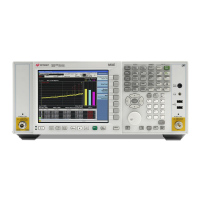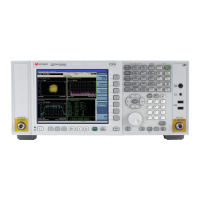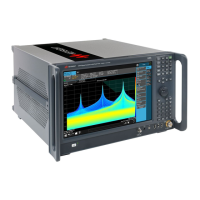28
Measuring Multiple Signals
Resolving Signals of Equal Amplitude
Resolving Signals of Equal Amplitude
In this procedure a decrease in resolution bandwidth is used in combination with a
decrease in video bandwidth to resolve two signals of equal amplitude with a
frequency separation of 100 kHz. Notice that the final RBW selection to resolve the
signals is the same width as the signal separation while the VBW is slightly narrower
than the RBW.
Step Action Notes
1 Connect two sources to the
analyzer RF INPUT as
shown.
2 Set up the signal sources. a. Set the frequency of signal
generator #1 to 300 MHz.
b. Set the frequency of signal
generator #2 to 300.1 MHz.
c. Set signal generator #1 amplitude
to −20 dBm.
d. Set signal generator #2 amplitude
to −4 dBm.
The amplitude of both signals
should be approximately
−20 dBm at the output of the
bridge/directional coupler. (The
−4 dBm setting plus −16 dB
coupling factor of the 86205A
results in a −20 dBm signal.)
3 Select the mode. • Press Mode, Spectrum Analyzer.
4 Preset the analyzer. • Press Mode Preset.
5 Set up the analyzer to view
the signals.
a. Press FREQ Channel, Center
Freq, 300, MHz.
b. Press BW, Res BW, 300, kHz.
c. Press SPAN X Scale, Span, 2,
MHz.
A single signal peak is visible.
See Figure 2-5.

